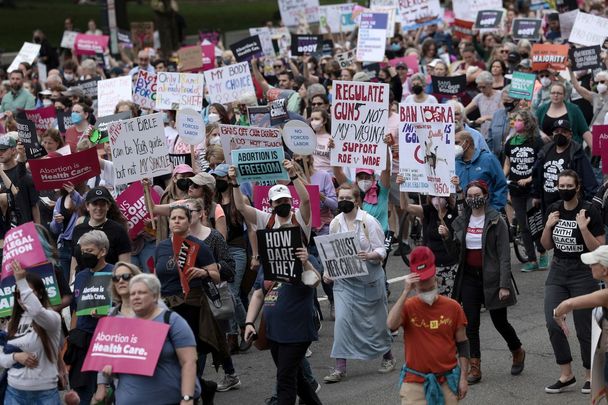A recent Salon.com post by two Fighting Irish Notre Dame scholars raised powerful, but confusing, questions about Irish immigration. The post was entitled (deep breath!): “Abortion, racism and guns: How white supremacy unites the right.” That’s…ambitious.
“Do things change?” the post wondered, before offering up what is described as an “early version of the racist ‘great replacement theory’” which “drove the campaign to outlaw abortion.”
This is certainly timely. The Supreme Court just ruled that there is, in fact, no federally protected right to abortion. And it was no coincidence, many angry folks noted, that the high court is currently packed with Catholics.
As for guns, well, I suspect there’s already been another mass shooting since I wrote the first sentence of this column.
The Salon post begins, “White supremacy was one of the primary motivations behind the first movement to outlaw abortion.”
Professors Tamar Kay and Susan Ostermann add that the American Medical Association (AMA) “launched a crusade to end abortion" in the 1850s. The AMA and other “white male Protestants…feared the growing number of immigrants from…largely Catholic countries.”
Back then that meant Ireland, of course.
A physician by the name of J.T. Cook argued, in 1868, that "the Anglo-Saxon race is rapidly dying out.” He worried that Irish Catholics and other immigrants were “fast taking the country…by the sheer force of their ever-increasing armies of babies…"
Other anti-immigrant activists believed “too many white Anglo-Saxon women were choosing to terminate pregnancies,” according to Kay (a professor of global affairs and sociology) and Ostermann (an assistant professor of global affairs and political science).
This all makes a certain kind of sense. Especially since scholars love to sympathize with past victims of “Anglo Saxon” bigotry.
And Irish Catholics certainly were that.
One anti-abortion activist complained, "Half a dozen children in every Irish family. Only two in the modern American family. What is the matter?”
Well, too many WASPs were having abortions.
“That is why, shortly, the children of the Emerald Isle will be walking through the graveyards of the Puritans," complained the same anti-Irish activist.
And so, Kay and Ostermann argue, nativist bigots who were worried the Irish were taking over the country set about “criminalizing abortion,” to combat the Pope’s fast-growing U.S. Army.
What’s confusing?
Well, as Kay and Ostermann themselves note, these Catholic immigrants, seen as “inferior races who threatened the country,” were also opposed to abortion.
And so, as time went on, they performed a neat trick. They went from being victims of WASP persecution to perpetrators of what we might call WASC persecution. The “C” standing for a kind of general Christian supremacy.
Let’s ignore, for a moment, that “Christians” have battled each other far longer than they’ve gotten along peacefully.
What is generally said about Catholic immigrants is that they “became white” – and, hence, part of the “systemic” problem.
In other words, the victims of “white supremacy” became the perpetrators of “white supremacy.”
Even if the whole point of calling out “systemic” oppression is to expose how it is rigid, inflexible, and profoundly difficult – if not impossible – to change.
And yet, here were Catholics from Ireland – and Italy, and Poland, and elsewhere – showing us that “the system” might actually be quite fluid.
And those who are paying attention might see today’s immigrants and their children revealing a similar fluidity.
This means working-class folks with roots in Asia and Latin America are, or are becoming, “white supremacists.” This may mean the phrase doesn't really tell us much anymore.
*This column first appeared in the September 14 edition of the weekly Irish Voice newspaper, sister publication to IrishCentral.




Comments